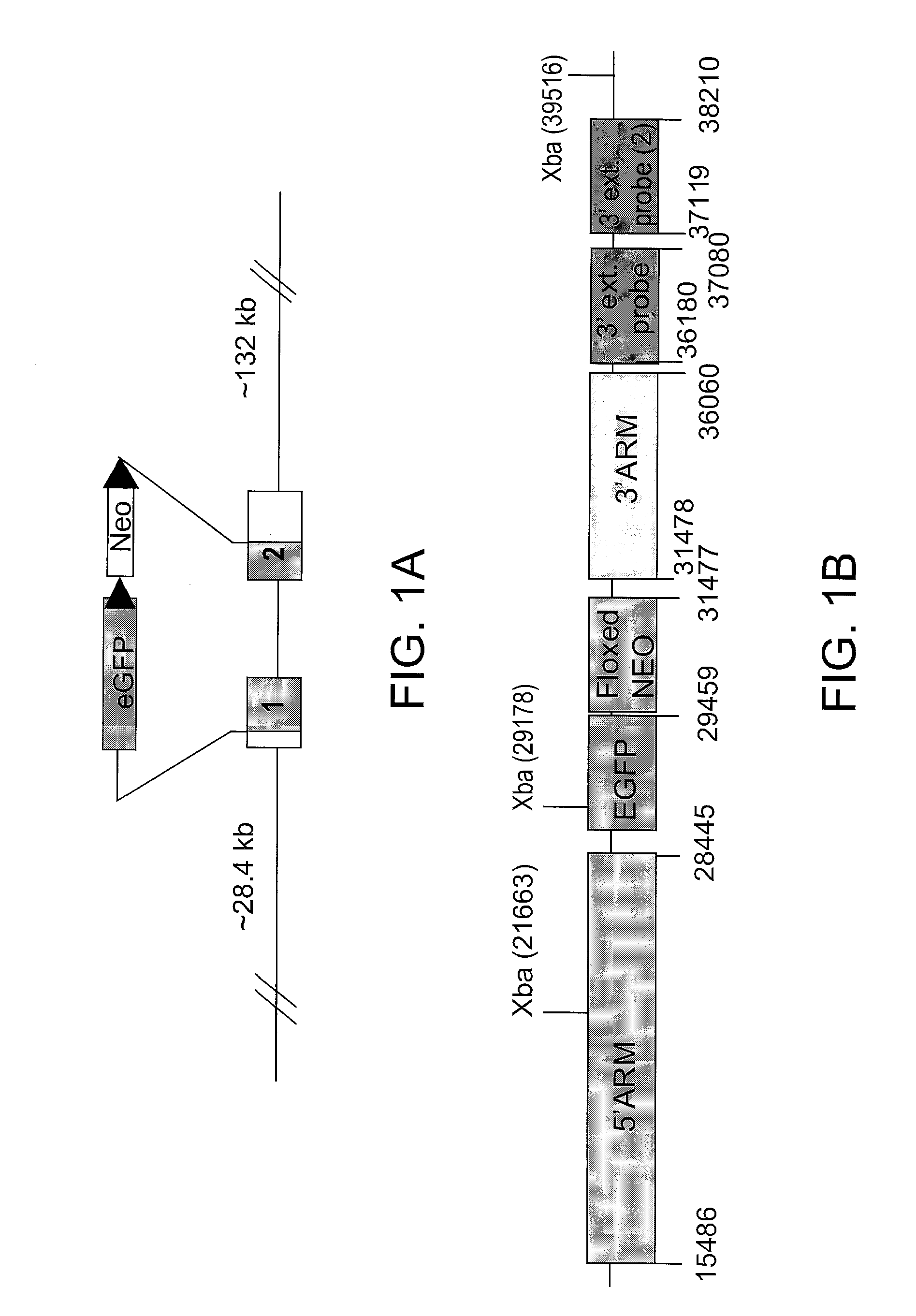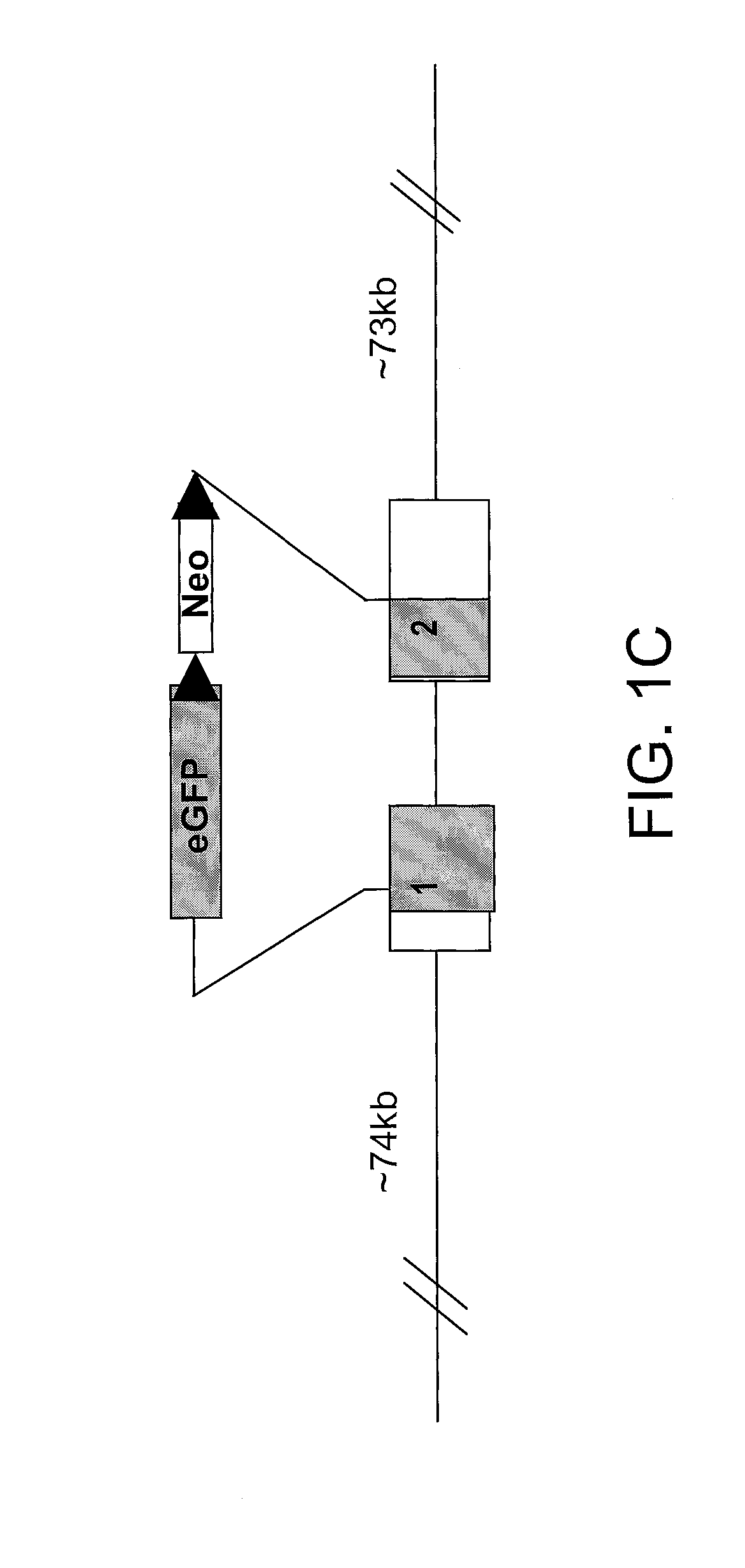Identification Of Novel Cell Surface Markers For Pancreatic Progenitor Cells And Definite Endodermal Cells
- Summary
- Abstract
- Description
- Claims
- Application Information
AI Technical Summary
Benefits of technology
Problems solved by technology
Method used
Image
Examples
example 1
[0326]The differentiation of hESCs into pancreatic beta cells is a stepwise process by which the initially pluripotent cell gradually becomes more committed towards the final cell fate of a functional insulin-producing cell. Initially, the pluripotent stem cells differentiate via mesendoderm into definitive endoderm. The definitive endoderm then commits towards a pancreatic cell fate, and these cells in turn differentiate towards an endocrine pancreatic cell fate, after which they commit to beta cells. FIG. 5A depicts a schematic illustration of differentiation of stem cells into pancreatic cells.
[0327]In order to fully characterize the differentiation of hESCs into insulin-producing cells it is important to identify and isolate these stage specific progenitor cells and characterize their properties on the molecular level. By obtaining a transcriptional profile of these cells and by identifying transcription factors that they express, a clearer picture of the differentiation process...
example 2
Generation of a Pdx1-Gfp Bac Construct and Isolation of PDX1-Expressing Escs
[0346]Experimental Results
[0347]BAC Transgenesis of PDX1-GFP Reporter BAC
[0348]An important gene in the commitment of definitive endoderm cells towards pancreas is PDX1. Thus, a fluorescent reporter construct was built to study precursor cells at this later stage of the differentiation process. The present inventors generated PDX1-reporter constructs in which the coding sequence of the PDX1 gene was replaced by the coding sequence of the EGFP gene together with a floxed Neo gene, as follows.
[0349]Preparation of PDX1 ATG-GFP-Knockin Construct:
[0350]EGFP and floxed neo was knocked into the PDX1 gene locus in BAC BAC RP11-322P28 by replacing the coding sequence of PDX1 (ATG to TGA) with the coding sequence of GFP and the floxed neomycin resistance gene. FIGS. 3A-B schematically illustrate the structure of the recombinant BAC RP11-322P28 PDX1-GFP construct (SEQ ID NO:15), which includes the PDX1 upstream regulat...
example 3
Genes which are Upregulated or Downregulated in Pancreatic Progenitor (Pdx1+) Versus Definite Endoderm (Sox17+) Cells
[0362]
TABLE 9Membranal genes which are upregulated in PDX1 cells as compared to SOX17 cellsAffy. targetSEQ IDLog 2 foldProbenucl. SEQ IDNO: (Of Rep.GenechangeSet IDNO:Rep. Public IDPublic ID)Polyn. SEQ ID NOs: rep. by targetSymbol[PDX-SOX]8100393944NM_00225315342708, 4588, 7921, 5498, 8228,KDR4.628051785945NM_13332915353647, 5227, 5228, 5783, 7561,KCNG34.198031076946NM_03189615363827, 5226, 7212, 5339,CACNG73.808096440947NM_00151015372719, 4235, 8429, 5557, 7933, 8154,GRID23.637996837948NM_00436015384149, 4182, 2614, 4278, 4556, 2794, 2795,CDH13.454415, 4294, 4315, 4347, 5506, 7453, 5404,7133,7917276949NM_01215215392780, 4363, 7551, 8539, 6011,LPAR33.338113666950NM_02079615402844, 4722, 3122, 3148, 4310, 4145, 8137,SEMA6A3.298152, 7900, 5499, 8724, 8667, 8467, 8111,5437, 8321, 7896, 5978, 8764,8135774951NM_00285115412599, 3943, 7457, 8030, 7815, 8011, 8237,PTPRZ13.157...
PUM
| Property | Measurement | Unit |
|---|---|---|
| Fraction | aaaaa | aaaaa |
| Fraction | aaaaa | aaaaa |
Abstract
Description
Claims
Application Information
 Login to View More
Login to View More - R&D
- Intellectual Property
- Life Sciences
- Materials
- Tech Scout
- Unparalleled Data Quality
- Higher Quality Content
- 60% Fewer Hallucinations
Browse by: Latest US Patents, China's latest patents, Technical Efficacy Thesaurus, Application Domain, Technology Topic, Popular Technical Reports.
© 2025 PatSnap. All rights reserved.Legal|Privacy policy|Modern Slavery Act Transparency Statement|Sitemap|About US| Contact US: help@patsnap.com



